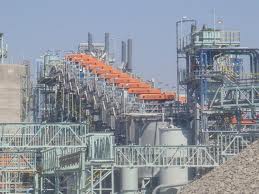
ZIMPLATS’s largest underground mine, Bimha Mine, yesterday collapsed due to accelerated deterioration of ground conditions associated with a major shear within the Ngezi complex, but no casualties or damage to mobile equipment was reported. SENIOR REPORTER
Bimha is the largest of the four Zimplats active mines in Ngezi area, 150 kilometres south-west of Harare.
Zimplats chief executive officer Alex Mhembere confirmed the accident.
“The collapse has affected nearly 50% of the current mining footprint at Bimha Mine, the largest of Zimplats’ four mines but a proactive response from the management team and the timely evacuation of all personnel, no injuries or damage of mobile equipment were reported,” Mhembere said.
The accident will affect production by 50%.
Mhembere confirmed the revised production figures.
“As a result production from the Bimha Mine has been downscaled by 50% equating to 45 000 ounces of platinum in matte production. Preliminary estimates indicate that it will take 15 months [two on twin decline development] to reach full production of eight fleets and 50 months to reconnect to current declines [FY19],” he said.
He added the firm was bringing in international mining experts to assist in rehabilitating the mine.
- Chamisa under fire over US$120K donation
- Mavhunga puts DeMbare into Chibuku quarterfinals
- Pension funds bet on Cabora Bassa oilfields
- Councils defy govt fire tender directive
Keep Reading
“A team of company experts supported by internationally renowned senior experts and consultants have been engaged to conduct detailed investigations and to make recommendations on the appropriate remedial action to return the mine to full production,” Mhembere said.
Full rehabilitation of Bimha was expected to take up to four years.
“Two of the eight fleets that were deployed at the Bimha Mine will be reallocated to redeveloping the declines to open up the bottom roadways. The remaining six fleets will be absorbed either within Bimha or the other mines. Reconnecting the declines is expected to take 50 months,” Mhembere said.
The fault lines at the mine were first discovered in 2011, but the situation has deteriorated further in the past year despite initiatives to address regional ground stability and employee safety at a total cost of $6 million.
The mine has been since forced to close part of the mine.
“Information gained from ground monitoring equipment installed to track the extent and magnitude of the deterioration has led to a decision to abandon and permanently close approximately half of the mining footprint in areas where major falls of ground have occurred,” Mhembere further said.











